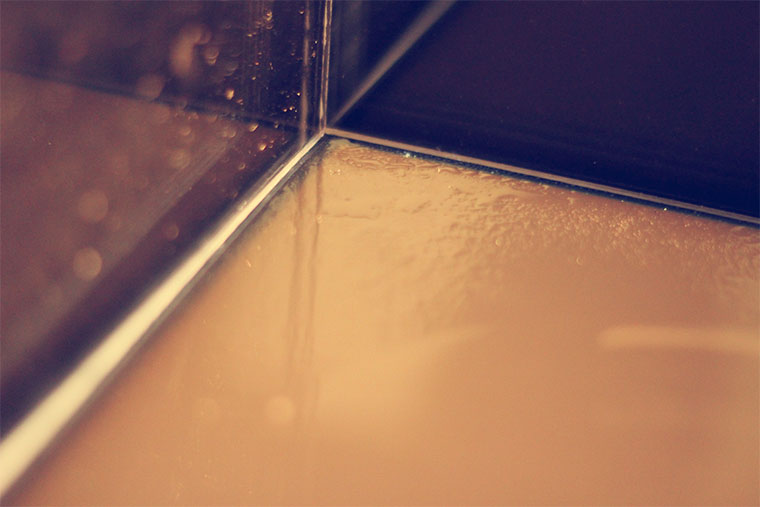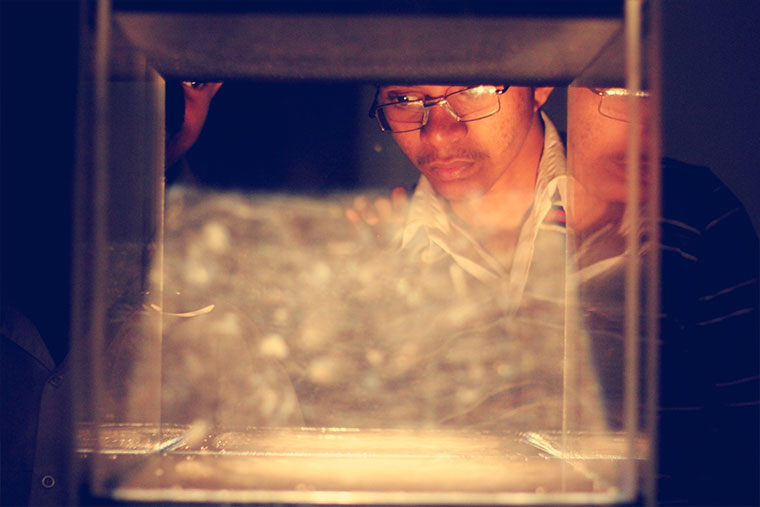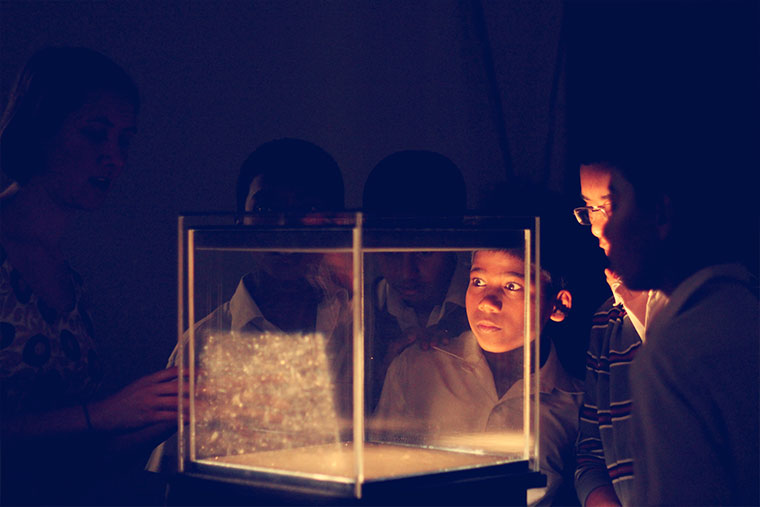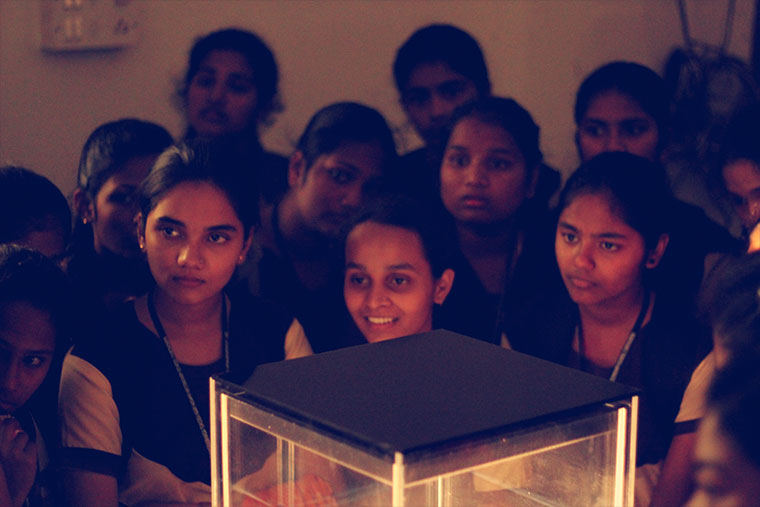The Origin of Clouds
ABOUT THE INSTALLATION
The Origin of Clouds derives from an experiment to study the formation of clouds that appeared within the larger context of weather phenomena research at the end of the nineteenth century. The Cloud Chamber or Camera Nebulosa was originally built to create artificial clouds in the laboratory and investigate their emergence in the atmosphere. The experiment failed in explaining this phenomenon and was never able to provide a better understanding of clouds, storms or lighting. However, the Camera Nebulosa made an unexpected discovery by enabling the visualization of fundamental particles for the first time. This so-called “failed experiment” became the visual proof of the existence of the sub atomic world and had a profound influence on the research within the field of atomic energy.
The experiment recreated in The Origin of Clouds uses saturated fumes of isopropyl alcohol that lied over a frozen plate inside a sealed glass chamber. The alcohol forms a thing layer over the cooled surface, and with the help of a strong source of light, different elemental particles start to emerge. These particles – muons and electrons – are a consequence of Cosmic Rays originating in the sun and outside the solar system. The average speed of these particles is 299.400 km/s (close to the speed of light).
The Origin of Clouds documents the process by which fundamental particles become form and materiality. The visual result is an ever-changing flux of ephemeral shapes with unpredictable occurrence that emphasizes the phenomenon’s organizational logic in space and time.
ABOUT THE ARTIST
Alejandro Borsani is an artist and educator who explores the intersection of natural and artificial systems by creating videos, installations, sculptures, custom software and electronics. His research is driven by a curiosity about simple physical phenomena and the exploration of emergent technologies.
His works have been presented in solo and group exhibitions internationally, including the Buenos Aires Museum of Modern Art (Buenos Aires), VideoBrasil (São Paulo, Brasil), Villa Elisabeth (Berlin, Germany), Centro Hipermediático Experimental Latinoamericano (Buenos Aires), Centro Cultural Borges (Buenos Aires), Gallery 400 (Chicago), Athletic Annex Exhibition (Albany), Center for PostNatural History (Pittsburg), ACM SIGGRAPH (Los Angeles), Galería Suchiche (Tarapoto, Perú), 14th Biennial Symposium for Arts and Technology (New London), Currents – The Santa Fe International New Media Festival (Santa Fe), Red Arrow Contemporary (Dallas), Federation Square (Melbourne, Australia), IDEAS_14 – International Digital Media and Arts Association (Orem, UT).
Borsani holds a MFA in Electronic Arts from the Rensselaer Polytechnic Institute (2012) and a MFA in Electronic Visualization from the School of Art and Design of the University of Illinois at Chicago (2010). He also received a degree in Audiovisual Design from the School of Architecture, Design and Urbanism at the University of Buenos Aires (2007). He served as faculty in the Creative Computation Program at the Southern Methodist University and in New Media Arts at the University of North Texas. Currently, he is Assistant Professor of Foundation Studies at the Rhode Island School of Design (RISD).
Contact: aborsani@risd.edu
KNOW MORE
The Cloud Chamber, more appropriately named the Wilson Chamber, after its inventor Charles Thomson Rees Wilson, is a particle detector used for detecting ionizing radiation.
In its most basic form, a cloud chamber is a sealed environment containing an extremely saturated vapor of water or alcohol. When a charged particle interacts with the mixture, the fluid is ionized(induced to develop a charge). The resulting ions, or electrically charged particles, act as condensation nuclei, around which a mist will form (because the mixture is on the point of condensation). The high energies of alpha and beta particles(types of charged particles) mean that a trail is left, due to many ions being produced along the path of the charged particle. These tracks have distinctive shapes (for example, an alpha particle’s track is broad and shows more evidence of deflection by collisions, while an electron’s is thinner and straight). When any uniform magnetic field is applied across the cloud chamber, positively and negatively charged particles will curve in opposite directions.
Cloud chamber in action: http://en.wikipedia.org/wiki/File:Cloud_chamber.ogg
Photo Credit : Tinka Kalajzic




